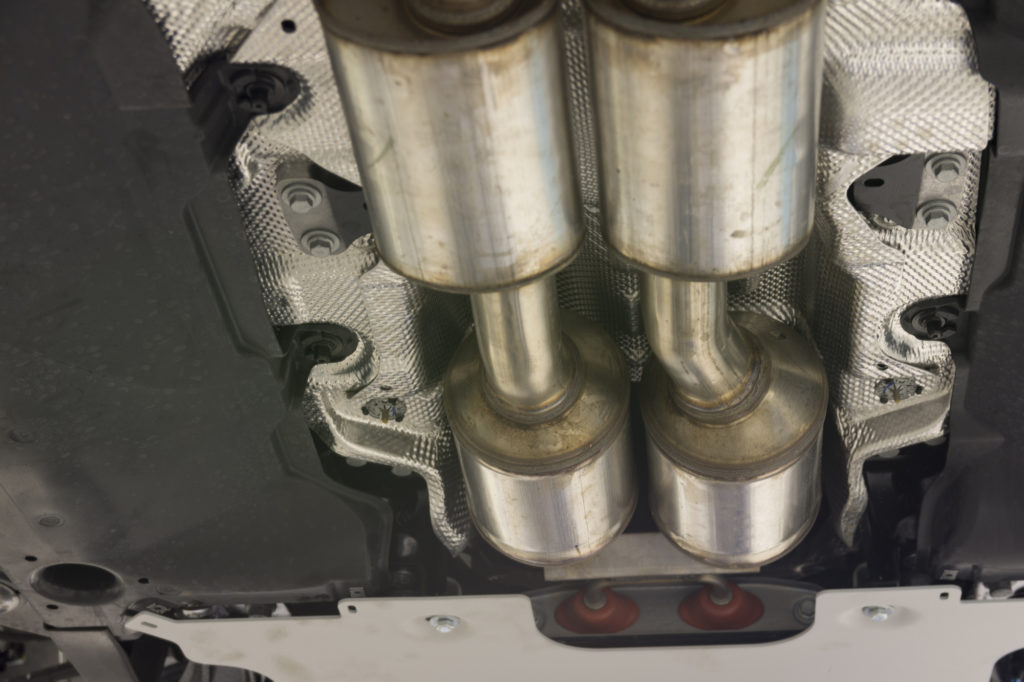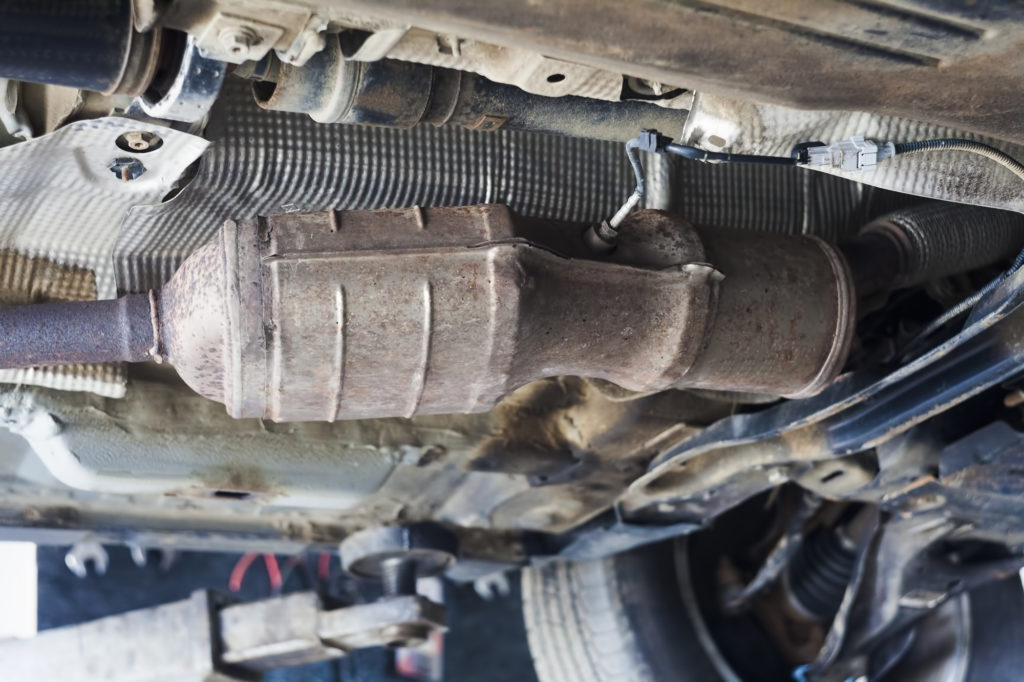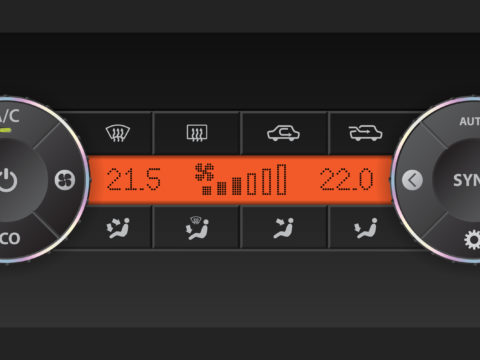When your car’s check engine light illuminates, you might connect an OBD-II scanner to check what the issue is.
If you see the code P0420, your catalyst system isn’t performing efficiently. A defective catalyst causes this error, or it can also be a false alarm.
You can fix it by cleaning or replacing the catalytic converter.

Contents
What Is the P0420 Code?
The exact definition of the P0420 code is “Catalyst System Efficiency Below Threshold.”
It might sound like a severe problem, but the risk of significant trouble is low.
You’ll see this code when your engine control module (ECM) thinks the catalyst isn’t working at maximum efficiency.
There are two oxygen sensors near the catalytic converter.
When the catalytic converter isn’t working correctly, it’s emitting pollutants instead of refining the exhaust to make it safer.
The O2 sensors detect this problem and alert the ECM, which turns on the check engine light.
What Causes the P0420 Code?
Seeing the P0420 code means your car’s exhaust isn’t getting filtered before it goes out of the exhaust pipe.
Since these gasses are bad for the environment, you want to fix the problem before releasing too much pollution into the air.
This problem can lead to more severe catalytic converter damage if left untreated.
Clogged Catalytic Converter
The catalytic converter can get clogged over time due to the pollutants passing through the exhaust system. If it has a block, the air won’t flow properly.
This type of backup can cause your check engine light to come on. Clean the converter to encourage optimal airflow to the engine.
The catalytic converter might not function properly if other issues are present.
These problems can include things like:
- faulty fuel injector
- high fuel pressure
- damaged fuel sensor
- fuel system issues
The P0420 alert might make you think something is wrong with your catalytic converter. However, it’s worth checking out these underlying issues as well.
They might be a quicker fix than needing to replace your catalytic converter.
Improper Catalytic Converter Installation
If your catalytic converter is a replacement, the mechanic might not have installed it properly. They can be too far from the engine, closer to the muffler, and never get hot enough to run properly.
It’s also possible that cheap catalysts create issues with how the system functions.
You don’t have to buy a replacement of the original equipment manufacturer’s catalyst, but don’t get a faulty part.
A badly made converter can cause even more problems than an older clogged model.
Faulty Oxygen Sensor
The oxygen sensors on your vehicle monitor the gasses that leave your exhaust pipe. The upstream sensor is in front of the catalytic converter, and the downstream sensor is after it.
Check the wires first, then look at the sensors. They might be dirty or corroded, so you can repair them yourself.
A mechanic can also replace them for you at a parts and labor cost ranging from $200 to $500.
Computer Problems
You shouldn’t bank on this issue, but computer problems can often cause the P0420 error to show up on your dashboard.
There can be software problems in the internal system that give you false alarms.
If you’re noticing other alerts even though your vehicle runs smoothly, you can see if there’s a software update for your system.
Exhaust System Leak
The exhaust system has a lot of parts, such as:
- catalytic converter
- exhaust manifold
- exhaust pipes
- muffler
- oxygen sensors
A leak in the system can cause the P0420 alert to display on your dashboard. Leaks can happen over time due to wear and tear while driving.
This problem is serious because it exposes you to carbon monoxide and makes you sick.

EVAP Leak Symptoms
An EVAP leak can occur in any portion of the evaporative emission control system.
You can tell there’s a leak based on many symptoms, such as difficulty starting the engine, poor driving performance, smelling fuel, and more.
Fuel Odor
Smelling fuel can be a sign of an EVAP leak. Tighten your gas cap to ensure the odor isn’t coming from there before looking for the EVAP leak.
Check Engine Light
As with the P0420 code, an EVAP leak can cause your check engine light to come on. You’ll usually smell gas, too, so seeing the light alone isn’t proof of a leak.
Poor Engine Performance
A leak in the EVAP system means your engine isn’t getting everything it needs to run. You might hear loud noises when you’re idling or have trouble accelerating.
Failed Emissions
If you have an EVAP leak, then your car won’t pass the emissions test.
Hard Start
An EVAP leak can give you trouble when you try to start your engine. However, a hard start doesn’t always mean a leak is a problem.
How To Fix Evaporative Emission System Leak
If you have a level of automotive know-how, you can fix an EVAP leak on your own.
Tools and Equipment Needed
The equipment needed varies depending on the source of the leak. You might only need an O-ring seal to patch the connection. You might need a new exhaust pipe, muffler, or catalytic converter.
Step 1
Find the source of the leak using a smoke test or bubble test.
Step 2
After finding the source of the leak, you need to determine which part you should replace.
Step 3
Replace the leaking section of the EVAP system.
Step 4
Reset the check engine light.
Step 5
Take your vehicle to a mechanic if the job is too much for you. It’s better to get professional help than potentially damage your car.
How Much Does It Cost To Fix P0420?
The repair cost can vary depending on the specific cause of the P0420 code. The mechanic will run a diagnostic test when you take your car.
They’ll find the root problem of the code and let you know what repairs need to happen and how much they’ll cost.
The most common repairs for the P0420 code include:
- Air fuel sensor replacement, ranging from $200 to $300
- Exhaust leak weld repair, ranging from $100 to $200
- New catalytic converter, ranging from $400 to $2,400
- Oxygen sensor replacement, ranging from $275 to $500
Can You Drive With a P0420 Code?
You can drive with a P0420 code, but you should get it fixed as soon as you have a chance.
There isn’t a high risk of damage when you’re driving with this code illuminated because the catalytic converter decreases the pollutants you’re putting out.
However, it’s bad for the environment to drive this way, and the problem can get worse the longer you leave it.
When you go to the mechanic for service, tell them about this issue so they can check out the catalytic converter and anything that might have caused the problem.
Since the problem can be a faulty sensor and airflow trouble, it can impact your engine over time.
How Long Can You Drive With an EVAP Leak?
You can drive with an EVAP leak, but it’s not the safest choice. You’re harming the environment with toxic emissions, and you can inhale these fumes as well.
Final Notes
When your check engine light comes on, the P0420 code tells you it’s a catalytic converter problem. From there, you can look for signs of an EVAP leak.
Fixing these issues ensures your car stays in good condition and doesn’t produce harmful emissions.














